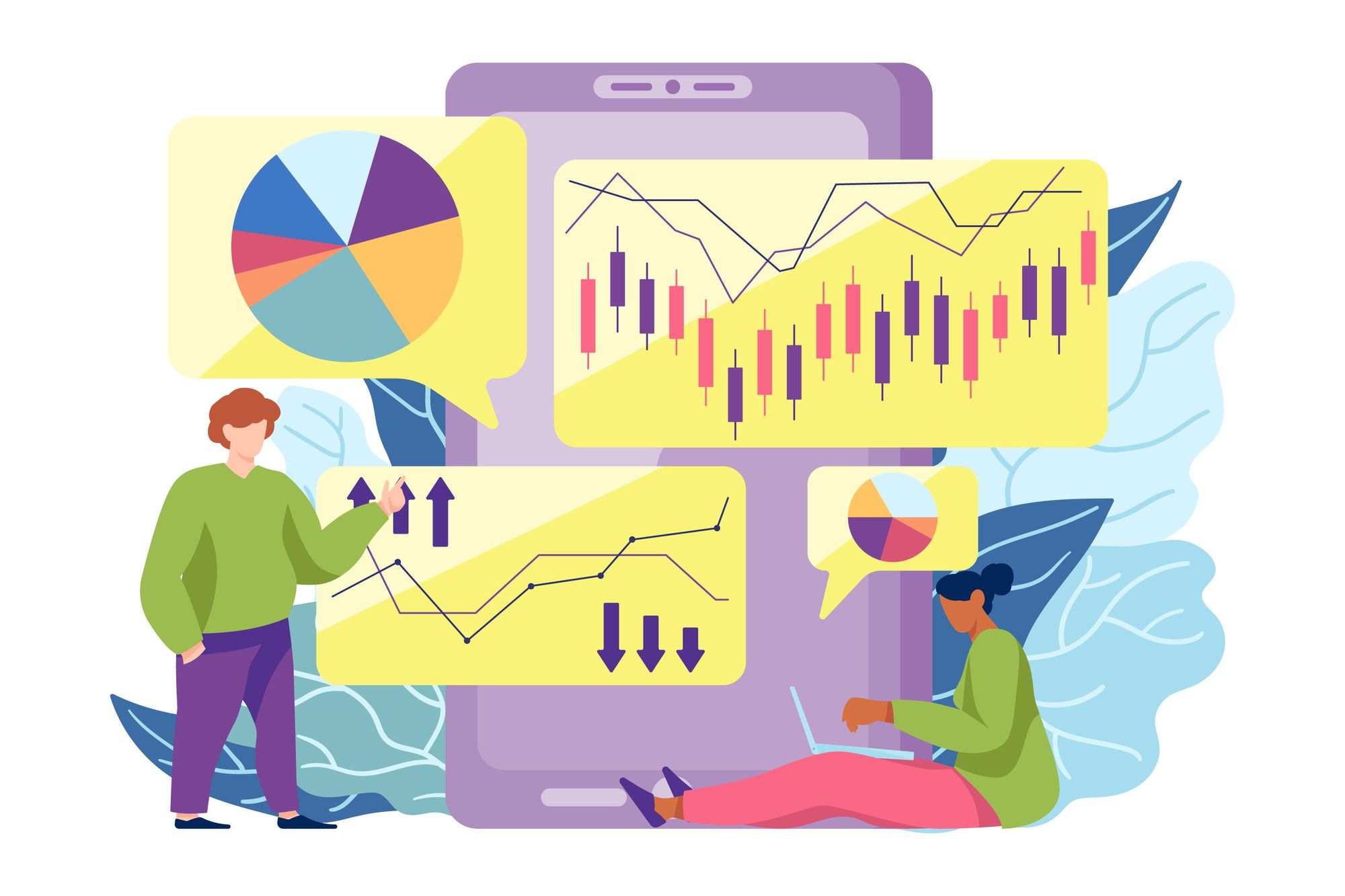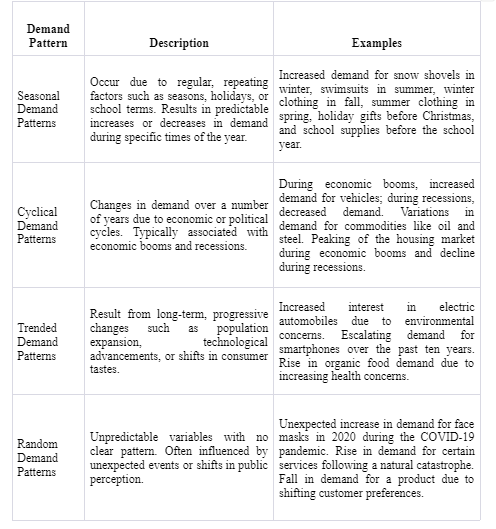Machine Learning for Identifying Demand Patterns

Demand forecasting is an essential stage. Businesses incur the risk of having inventory management problems, which might lead to either over- or under-ordering of specific commodities at particular times. When there are too many products on the market, businesses may need to provide discounts to sell surplus inventory, but shortages might result in a loss of revenue. However, by utilizing demand and sales forecasting techniques like machine learning, it may be possible to maximize inventory returns and foresee future consumer intent to buy specific items at precise price points, thus overcoming these difficulties.
What Are Demand Patterns?
Demand is the term used to describe customers' expressed desire for a certain good or service, which is motivated by their financial capacity. Understanding demand patterns is essential for businesses because they affect inventory management, pricing strategies, and the identification of potential growth areas. A company's capacity to comprehend demand patterns ultimately determines its long-term profitability and development, with artificial intelligence (AI) playing a critical role in improving this comprehension through demand forecasting.
Why Demand Patterns Are Important?
Here are a few reasons why demand patterns are important:
Manage Risk: When businesses have a thorough awareness of demand trends, they are better able to manage risk. Businesses may choose to diversify their product offerings in response to market instability or alter their operations in reaction to shifting demand.
Recognize possibilities: By examining their demand patterns, businesses might discover new possibilities. For instance, a business that sells seasonal items could see trends and expand its product line to appeal to customers at different times of the year.
Forecasting Future Demand: By recognizing demand trends, businesses may accurately predict future demand. This foresight makes it possible to manage inventory levels optimally, avoiding shortages or overstock problems and improving general customer service.
Different Types of Demand Patterns
Seasonal Demand Patterns
Seasonal demand patterns occur when certain factors, such as seasons, holidays, or school terms, repeat regularly. Examples include the increased demand for snow shovels in winter and swimsuits in summer. Other instances involve higher demand for winter clothing in fall, summer clothing in spring, holiday gifts before Christmas, and school supplies before the school year.
Cyclical Demand Patterns
Demand patterns change over a number of years as a result of economic or political cycles. For instance, during economic booms, demand for vehicles rises, but during recessions, it falls. Other examples include variations in the demand for commodities like oil and steel, as well as the peaking of the housing market during economic booms and the decline during recessions.
Trended Demand Patterns
Trended demand patterns are the result of long-term, progressive changes like population expansion, technical advancements, or changes in consumer tastes. Examples include the increased interest in electric automobiles due to environmental concerns and the escalating demand for smartphones over the past ten years. Other examples include the rise in organic food demand as people's health concerns increase.
Random Demand Patterns
Unpredictable variables with no clear pattern are random demand patterns. Examples include unexpected increases in demand resulting from breaking news or social media fads, such as the rise in demand for face masks in 2020 during the COVID-19 pandemic. In other situations, there may be a rise in demand for certain services following a natural catastrophe or a fall in demand for a product as a result of shifting customer preferences.

How to Identify Demand Patterns?
Let's investigate machine learning (ML) at this time. It is a crucial step in this analytical process and is necessary to comprehend demand patterns.
In order to examine enormous volumes of data, machine learning employs algorithms and statistical models, learning and changing as it goes. When used to analyze demand trends, it can:
Uncover Complex Patterns
Machine learning sifts through data in-depth, revealing complex patterns that conventional approaches can miss. Businesses may gain a more detailed picture of demand thanks to its ability to spot correlations, relationships, and patterns.
Enhance Prediction Accuracy
ML systems continually learn from new data, which helps them become more accurate predictors over time. This enables organizations to forecast more accurately, lowering the risks brought on by wrong projections.
Adapt to Changes
Demand is a dynamic force that constantly shifts, develops, and astounds. When it comes to adjusting to these changes, machine learning shines, allowing organizations to remain ahead of the curve and react rapidly to changes in demand.
Optimize Inventory Management
ML enables companies to manage their inventories effectively. Businesses may optimize stock levels, lowering the cost of extra inventory and lowering the risk of stockouts, by more correctly forecasting demand.
Enable Real-time Decision Making
Machine learning gives companies the opportunity to make decisions in real time. Whether it's altering manufacturing schedules, refining pricing tactics, or fine-tuning marketing efforts, ML delivers the agility needed to flourish in a dynamic market.
Bottom Line
By combining machine learning and demand pattern analysis, enterprises may significantly profit from this approach. In addition to understanding what customers now want, it's critical to predict their future needs and adapt naturally to meet them. Machine intelligence emerges as the compass that points businesses in the right direction as they navigate the complex supply and demand landscape. As we set sail into the future, let's embrace the power of data, analytics, and informed decision-making to make sure that businesses not only keep up with demand but also set the norm.